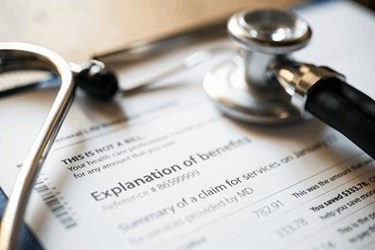The Healthcare Purchaser's Role In Biosimilar Uptake

By Anna Rose Welch, Editorial & Community Director, Advancing RNA

Education has been a central focus of many biosimilar-related articles I’ve read, interviews I’ve conducted, and conferences I’ve attended. Physicians and patients have been targeted as the most important stakeholders in need of education. But they’re not the only ones.
At the GPhA Biosimilars Council Leading On Biosimilars conference, I met Brian Lehman, manager of pharmacy benefits and policy for the Ohio Public Employees Retirement System (OPERS). While at the conference, he presented on a stakeholder panel about the work being done to get OPERS and other healthcare purchasers up to speed with biosimilars. As he described in a follow-up interview, one of his goals is to encourage purchasers to get involved in the legislation and regulation of biosimilars. However, like with many other stakeholders, there is a great need for education so purchasers can better understand the impact proposed legislation would have on biosimilars.
“Healthcare purchasers are aware from a high level about biosimilars and their cost-savings potential," Lehman described. "But there needs to be more in-depth education to help them understand, for example, the differences between a biosimilar and an interchangeable biologic, as well as all the work it will take to make biosimilars successful.”
The Impact Of Biosimilars: The Purchaser’s Perspective
 Small molecule generics were a game-changer for OPERS. By the end of 2015, almost 90 percent of the prescriptions filled by OPERS members were generic drugs. This led to $19 million or 9 percent in savings on overall drug spend in 2015 alone. As biosimilars enter the market, these medicines are also poised to help OPERS control its specialty biologic drug spending. Biologics accounted for 33 percent of OPERS’ drug spend in 2015. Lehman calculates the 11 biosimilars slated for release in the next decade will save OPERS roughly $134 million by 2025.
Small molecule generics were a game-changer for OPERS. By the end of 2015, almost 90 percent of the prescriptions filled by OPERS members were generic drugs. This led to $19 million or 9 percent in savings on overall drug spend in 2015 alone. As biosimilars enter the market, these medicines are also poised to help OPERS control its specialty biologic drug spending. Biologics accounted for 33 percent of OPERS’ drug spend in 2015. Lehman calculates the 11 biosimilars slated for release in the next decade will save OPERS roughly $134 million by 2025.
“This isn’t the same dollar amount you would see if you totaled up our generic savings year over year,” Lehman explained. After all, only three percent of retirees supported by OPERS are taking biologics. “But it’s still a significant savings, and it means we’re able to make our premiums, copays, coinsurance, and deductibles more affordable,” Lehman said.
According to Express Scripts (OPERS’ pharmacy benefits manager [PBM]), by 2018, biologics will amount to 50 percent of OPERS’ drug spend. But this is just under the pharmacy benefit, which includes drugs that are doled out by retail pharmacies and are self-administered. For OPERS, 40 percent of biologics spending is under the medical benefit, which comprises drugs typically administered in hospitals, outpatient clinics, physicians’ offices, or via home infusion. “Currently, there isn’t as much focus from the healthcare purchaser lens on what is going on under the medical benefit. But this is beginning to change,” said Lehman. “We are involved in that space, but managing prescription drugs is, generally, more advanced under the pharmacy benefit. This is because reporting is strong and the tools to manage biologicals are widely available [i.e. formularies, rebates, prior authorizations, plan design, exclusive specialty pharmacy, and step therapies].”
Challenges The Medical Benefit Poses For Purchasers, Biosimilars
How health systems contract and interact with health plans presents purchasers (and biosimilar manufacturers, for that matter) with added challenges. Lehman describes how some health systems, which commonly own outpatient clinics and infusion centers, now have begun to develop their own specialty pharmacies. In Ohio, for example, the Cleveland Clinic and The Ohio State University both have started specialty pharmacies. This means that, not only does a purchaser such as OPERS have to work with a PBM, but it also has to work with health plans and health systems that administer biologics and influence product use.
“These health systems are not all aligned,” Lehman explained. “A health system could have Inflectra [biosimilar infliximab] on its formulary, but the health plan may have a program in place specifying Inflectra cannot be given out in an outpatient setting. For instance, this program could specify the biosimilar can only be given out in a home-care setting. Or, it could restrict the use of Inflectra in all settings in favor of the reference drug Remicade, because the health plan receives a rebate from Remicade.”
Unfortunately, there isn’t an easy solution for purchasers to overcome this fragmentation. Some purchasers have begun talking to biosimilar companies to determine their perspectives on the disjointed management and payment system. The goal of these conversations is to learn how healthcare purchasers can contribute to the alignment of the system, not cause additional fragmentation. Similarly, because healthcare purchasers do not play a role in discount and rebate negotiations with PBMs, health plans, and health systems, these discussions are a good forum to impress upon the need for competitive biosimilar prices. “If a manufacturer offers a competitive price for its biosimilar, it is likely the health systems and health plans will react by launching tools to help support biosimilar uptake,” Lehman explained.
OPERS Strategy For Biosimilar Uptake
To encourage savings for its members, OPERS will launch a biosimilars/generics specialty drug tier in 2017. Patients taking a biosimilar will see some savings in terms of coinsurance. This tier would boast 40 percent coinsurance, with a $100 maximum the patient will pay for their biosimilar. This is compared to OPERS biologic/brand specialty drug tier, which has a 40 percent coinsurance with a $150 maximum. “Biosimilars are currently all on the same specialty drug tier,” Lehman explained. “Right now, our members pay 40 percent, with a $150 max. Putting biosimilars on their own tier with a $100 max would help patients realize savings.”
OPERS’ initiative was inspired in part by a recent white paper released by Avalere Health on patient out-of-pocket costs for biosimilars in Medicare Part D. This paper outlined two different ways to keep patient costs for biosimilars low. These options included either creating a biosimilar tier to ensure patient out-of-pocket costs remain below reference prices, or having manufacturers pay 50 percent of drug costs for patients within the coverage gap.
It’s hard to say whether more purchasers will also create a biosimilar/generic specialty drug tier. There are still a number of factors that need to play out in the market. For one, it will depend on whether Medicare Part D chooses to create a biosimilar/generic specialty drug tier. The PBMs could also play an influential role. We’ve seen CVS and UnitedHealthcare grant biosimilar Zarxio, typically reimbursed under the medical (not pharmacy) benefit, and follow-on biologic Basaglar prime places on their formularies. But it is early, and there are still questions about how biosimilars in general will be supported and managed by payers under the pharmacy benefit. There are some concerns that biosimilars might not be granted favorable formulary status or have utilization management programs compared to reference biologics.
“We will know more as additional biosimilars become available in the market, such as Erelzi [Sandoz’s biosimilar to Amgen’s Enbrel],” said Lehman. “One thing that is for sure is there will be some serious discussions between the PBMs and their clients, such as OPERS, about the PBM’s level of support [i.e. formulary] for biosimilar competition.”
In addition to determining the appropriate pricing and tier structure, OPERS has begun to focus on the impact of patent litigation on the growth of the market. OPERS has been vocal about the delays caused by patent litigation, as well as the potentially negative impact a six-month notice of marketing could have on healthcare costs. “It could be a long time before our retirees have access to these products,” Lehman said. “We can celebrate the FDA approval of Erelzi. But then we have to explain to our employees and our retirees why the biosimilar might not make it to market for quite some time.”
Lehman has emphasized the importance of getting involved with proposed regulation and legislation. Purchasers should not shy away from writing letters to the FDA on current issues that could greatly impact the uptake of biosimilars, such as interchangeability, or supporting legislation, such as the CREATES Act. “We want to ensure that the regulations and legislation put in place will not be barriers to the retail pharmacist nor our members,” said Lehman.
